1 Aerovel Flexrotor
Weight: 42.3lb/19.2kg
Range: 1,800nm
Endurance: 40h
Payload: 2.2lb/1kg
Speed: 45kt
Engine: 28cc 2-stroke
Aerovel is attempting to solve a problem its designer created. Tad McGeer was one of the founders of Insitu, and was instrumental in the design of the Aerosonde and the ScanEagle. Both unmanned air systems would play a huge rule in popularising the industry over the last 15 years, but they also require heavy equipment for take-off and recovery. To solve that problem, McGeer's new start-up came up with a new spin on an old concept: the tailsitter. The Flexrotor takes off like a helicopter and then pitches forward to cruise in wing-borne flight.
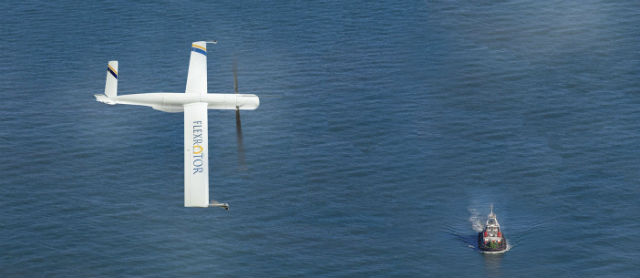
Flexrotor concept in flight (artist's impression)
Aerovel
2 Aurora Flight Sciences Orion
Weight: 11,200lb/5,090kg
Range: 13,000nm
Endurance: 120h
Payload: 1,000lb/455kg
Speed: 85kt
Engine: 2X Austro Engine AE300 turbo-diesel
It's been three decades since the Scaled Composites Voyager and the Boeing Condor set world records, but the dream of ultra-long endurance lives on. The Orion programme was launched by the US Department of Defense to fly week-long surveillance missions at the height of counter-insurgency operations in Afghanistan, but development and testing continued even after the US withdrew most of its forces in 2014. Finally, on 8 December 2014, the Orion established a new world record for unrefuelled endurance by an unmanned aircraft with a flight lasting 80h. The milestone event validated Orion's conventional technology and earned a nomination for the prestigious Collier Trophy.
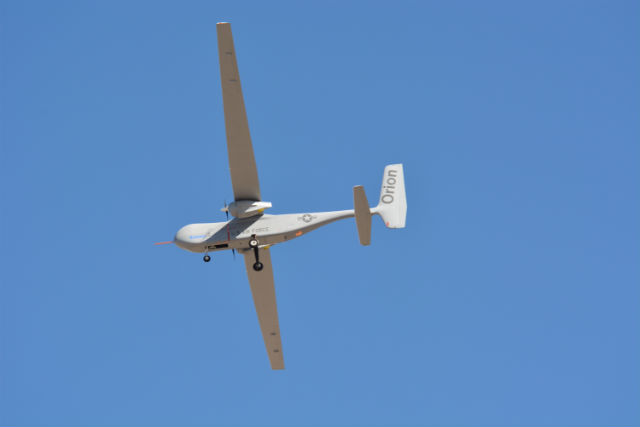
Orion
Aurora Flight Sciences
3 Boeing Insitu ScanEagle2
Weight: 51.5lb/23.4kg
Range: N/A
Endurance: 16h
Payload: 7.7lb/3.5kg
Speed: 60kt
Engine: Heavy fuel or gasoline
Having already made history with the original ScanEagle in military operations, Insitu conceived of a new aircraft with a purpose-built propulsion system for the civil market. The ScanEagle2 features Orbital's direct fuel injection engine and a new three-blade propeller. It will carry a larger payload than the original ScanEagle, but most importantly it should prove more reliable. The Orbital engine has passed FAR 33 airworthiness certification by the US Federal Aviation Administration – a rarity in the world of small unmanned aircraft systems.
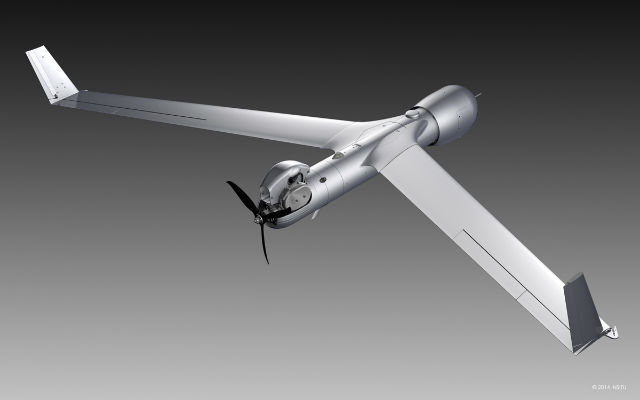
ScanEagle 2; new engine, propeller
Insitu
4 DARPA/ONR Tern programme
Weight: Unknown
Range: 900nm
Endurance: Unknown
Payload: 600lb/270kg
Speed: Unknown
Engine: Unknown
Phase 2 of the Tern programme is now under way. The joint programme by the Defense Advanced Projects Agency and the Office of Naval Research has selected two contractors – Northrop Grumman and AeroVironment – to complete risk reduction and preliminary design work. One contractor will be selected to build and fly a demonstrator in Phase 3, assuming such a vehicle is physically possible. It's one thing to operate a small fixed-wing unmanned aircraft, such as a Boeing/Insitu ScanEagle or RQ-21 Blackjack, from a small navy vessel like the Littoral Combat Ship; it's quite another to operate an aircraft with payload and endurance capabilities closer to a General Atomics Aeronautics Systems MQ-1 Predator or Israel Aerospace Industries (IAI) Heron. Somehow, Northrop and AeroVironment must invent a way for an aircraft of that size to take-off and land without a runway, and that can recover on to a surface that moves in pitch and roll. DARPA has released a concept image of a tailsitter design, but no images have yet surfaced of either company's proposed design.

Tern concept
DARPA
5 Google Project Wing
Weight: Unknown
Range: Unknown
Endurance: Unknown
Payload: Unknown
Speed: Unknown
Engine: Unknown
That we know anything at all about how the programme began is fascinating by itself. As tight as the security surrounding unmanned aircraft projects is in the military's classified system, it has nothing on the likes of Amazon and Google X. Here's what we know: Google founder Sergey Brin tasked Astro Teller – the grandson of famous nuclear physicist Edward Teller – to solve several global problems. One of those problems identified was urban traffic and all the wasted hours trying to deliver small packages from one part of town to another. So, Teller hired former Rockwell Collins executive and autonomous flight entrepreneur David Vos to come up with an unmanned system to deliver packages in urban areas. The Google Project Wing team revealed the fruit of its efforts on 28 August last year, releasing a video showing a tailsitter aircraft design successfully delivering a treat to a neighbour's dog. Although that particular demonstration worked, Google has dropped the tailsitter design and is working on a new aircraft that it may reveal later this year.
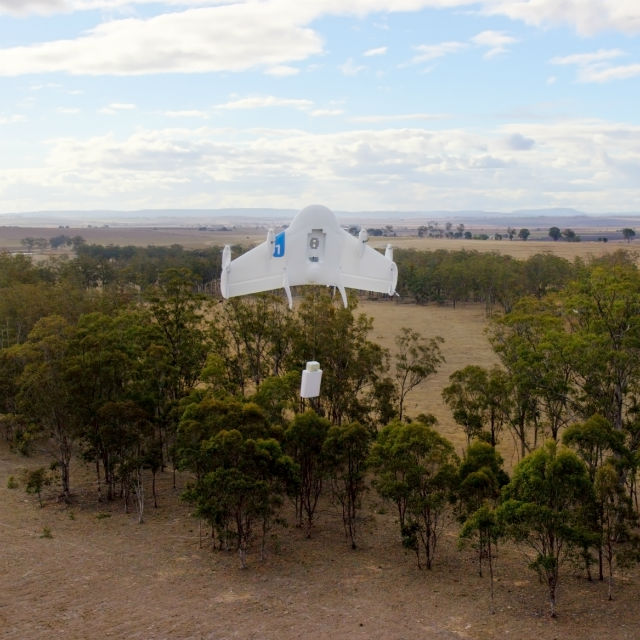
Project Wing; your order has been dispatched
6 Lockheed Martin Fury Block 10
Weight: 300lb/130kg
Range: Unknown
Endurance: 15h
Payload: Unknown
Speed: Unknown
Engine: Heavy fuel
It first emerged in 2009 as the Aeromech Sand Dragon, a flying-wing-shaped tactical unmanned aircraft system in development for the US Air Force Research Laboratory. The San Luis Obispo, California-based start-up was later acquired by Chandler May, a key supplier in AAI's One system ground station for the US Army's unmanned aircraft fleet. Chandler May was then bought by Lockheed Martin, and the Sand Dragon concept morphed into the Fury UAS. The new design featured a satellite communications design. Earlier this year Lockheed revealed the Block 10 version of the Fury, with an extended wing and more endurance. It is likely the basis of the company's proposal to the US Special Operations Command for a $400 million fee-for-services contract called Mid-Endurance UAS III (MEUAS).

Lockheed Martin Fury
Lockheed Martin
7 Lockheed Martin X-56
Weight: 500lb/230kg
Range: Unknown
Endurance: Unknown
Payload: 0kg
Speed: 150kt
Engine: 2X JetCat P400
The latest publicly acknowledged unmanned aircraft to emerge from Lockheed Martin's Skunk Works hangar is the X-56, a small, turbojet-powered demonstrator. The X-56 may be public, but its purpose is most likely to validate technologies for the next generation of flying-wing-shaped stealthy aircraft. Both the Air Force Research Laboratory and NASA are using the X-56 to test active aeroelastic wing technologies. The goal is to develop new aircraft with high aspect ratio wings that resist flutter and control surfaces that twist rather than actuate to direct the aircraft's motion.
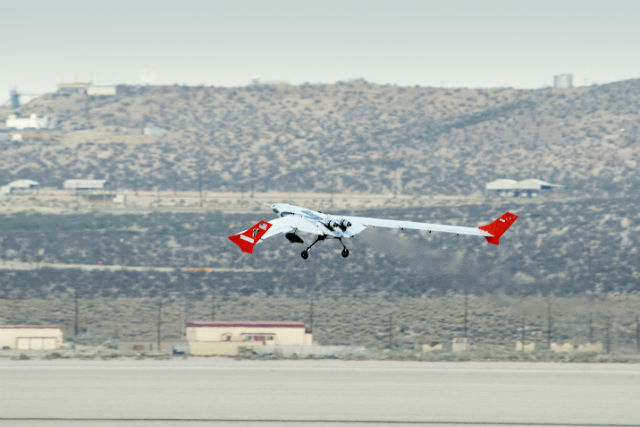
Lockheed Martin X-56
Lockheed Martin
8 Prox Dynamics PD-100 Black Hornet
Weight: 18g/0.63oz
Range: Unknown
Endurance: About 20min
Payload: Unknown
Speed: Unknown
Engine: Unknown
This is NOT a toy. The PD-100 Black Hornet developed by Norway-based Prox Dynamics is a personal reconnaissance system and billed as the world's smallest operational unmanned aircraft system. NATO forces have used the PD-100 "extensively" in combat operations since at least 2012, the company says. The 18g helicopter provides live motion video and snapshots to a tablet device. Having already gained a foothold in Europe, Prox Dynamics has set its sights on the US defence market. The company recently exhibited at the Navy League's Sea-Air-Space exhibition in Washington DC, and plans to attend the annual AUVSI convention in Atlanta in the booth of its UK distributor. Its marketing presence is growing as the US Army begins developing requirements for a micro-unmanned aircraft system for personal intelligence, surveillance and reconnaissance.

Proxdynamics PD-100 Black Hornet
Proxdynamics
9 Raytheon Coyote
Weight: 13lb/6kg
Range: 60nm
Endurance: 1h
Payload: 2lb (<1kg)
Speed: 60kt
Engine: Electric motor
The Coyote has had a lot of corporate owners in its roughly decade-long existence. The small unmanned air system was developed by Tucson-based Advanced Ceramics Research along with the Manta and the Silver Fox. BAE Systems acquired the company in 2009. In February, Raytheon acquired the company from BAE. The Coyote was designed with a unique requirement to be launched from a standard sonobuoy tube. It could then be launched from a Lockheed P-3 Orion or Lockheed/Sikorsky MH-60 and feed surveillance information back to the mothership. Much like a sonobuoy, it would be discarded at the end of a roughly 1h mission. So far, the US Navy has not picked up the Coyote for its anti-submarine warfare fleet, but it is being used by the US National Oceanic and Atmospheric Administration's P-3 fleet. It is now the focus of an Office of Naval Research programme seeking to demonstrate a swarming surveillance concept by launching 30 Coyotes at the same time from a ship-based tube launching system.
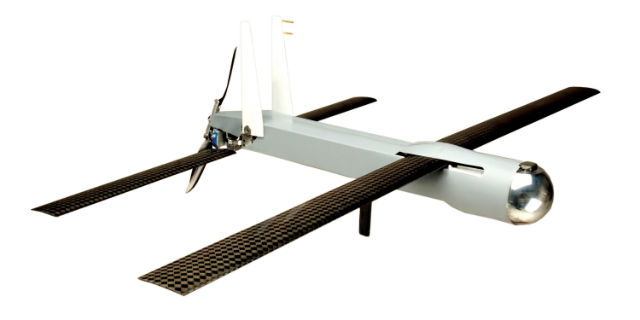
Raytheon Coyote
BAE Systems
10 Tekever AR5 Life Ray Evolution
Wingspan: 4.3m
Endurance: 8-12h
Payload: 50kg
Engine: Unknown
Portuguese UAV maker Tekever has sprung to life quickly in recent years. Its AR4 Light Ray has been used by the company to monitor lava flows from the Pico do Fogo volcano eruption – as well as by the Portuguese army in Kosovo – while Portuguese police forces are using hand-launched systems like the AR1 Blue Ray. But one system that is really making waves is the AR5 Life Ray Evolution, which has been selected to participate in the testing of Europe’s first UAV maritime surveillance system, following a contract award from the European Space Agency and European Maritime Safety Agency.
Through this Rapsody programme, the UAV is involved in two years of testing in two different scenarios – search-and-rescue and pollution and oil spill monitoring – over the Atlantic and the North and Mediterranean seas; this is the first time UAVs will be introduced into maritime surveillance missions in Europe, according to Tekever.
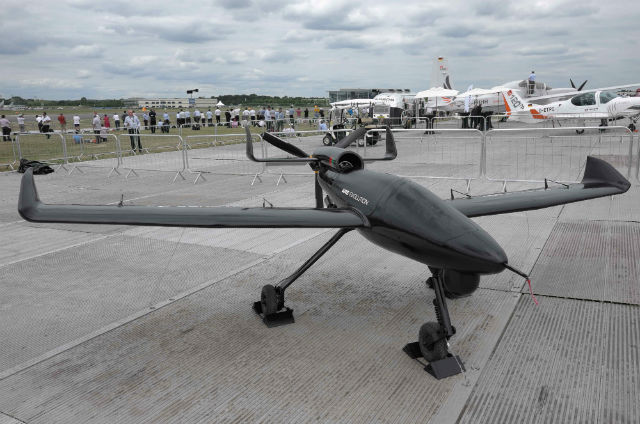
Tekever AR5 Life Ray Evolution
Tekever
Source: FlightGlobal.com






















